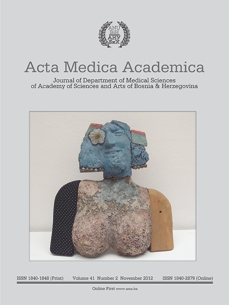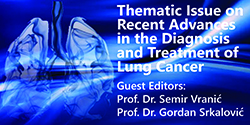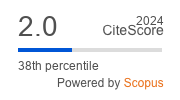Essential guidance for psychosocial assistance in post-conflict settings: Care providers’ perspectives on suffering, healing and pressing needs in Bosnia and Cambodia
Keywords:
Traditional healing, Mental health, Psychosocial assistance, Poverty, ViolenceAbstract
This exploratory study aimed to obtain insight into field-level care providers’views on suffering and healing as well as existing obstacles andneeds related to providing care to their clients. This research providesa “snapshot” for a better understanding of existing care systems in twopost-conflict settings. By identifying existing approaches to care andthe needs of the care provider community, this research might be usefulin guiding psychosocial assistance programming in post-conflictsettings. Utilizing a semi-structured questionnaire, 45 care providerswere interviewed, including local health care practitioners, traditional/spiritual healers, and humanitarian relief workers, in Bosnia andHerzegovina and Cambodia. This study found that the majority ofcare providers in both settings perceived poverty and violence as significantcauses and consequences of human suffering and, at the sametime, felt ill-equipped in addressing these issues and related problems.Other issues that hindered these healers in providing care included:limited government/institutional support; lack of training; materialresources and funding. Study findings point to a new framework fordeveloping effective interventions and the need for further emphasison supporting care providers in their work, and most specifically, inidentifying and responding to poverty and violence.References
Robins L, Reigier D, editors. Psychiatric disorders in America: The Epidemiologic Catchment Area Study. New York: The Free Press; 1991.
Norris FH, Byrne CM, Diaz E, Kaniasty K. The range, magnitude, and duration of effects of natural and human-caused disasters: a review of the empirical literature. National Center for Post-Traumatic Stress Disorder, Department of Veterans Affairs; 2001.
Roberts B, Damundu EY, Lomoro O, Sondorp, E. Post-conflict mental health needs: a cross-sectional survey of trauma, depression and associated factors in Juba, Southern Sudan. BMC Psychiatry. 2009;4(9):7.
Mollica RF. Invisible Wounds. Sci Am. 2000;282(6):54-7.
Waldman R, Martone G. Public Health and Complex Emergencies: New Issues, New Conditions. Am J of Public Health. 1999;89(10):1483-5.
Mollica RF, Lopes Cardozo B, Osofsky HJ, Raphael B, Salama P. Mental health in complex emergencies. The Lancet. 2004;364(9450):2058-67.
Ager A. Tensions in the psychosocial discourse: Implications for the planning of interventions with war-affected populations. Dev Pract. 1997;7(4):402-7.
Summerfield D. Assisting survivors of war and atrocity: Notes on ‘psychosocial’ issues for NGO workers. Dev Pract. 1995;5(4):352-60.
Summerfield D. A critique of seven assumptions behind psychological trauma programmes in waraffected areas. Soc Sci Med. 1999;48:1449-62.
Bracken P, Giller JE, Summerfield D. Rethinking Mental Health Work with Survivors of Wartime Violence and Refugees. Journal of Refugee Studies. 1997;10:4431-42.
Population Council. Psychosocial benefits of a mentoring program for youth-headed households in Rwanda. 2007. Found November 13, 2012 from: http://www.popcouncil.org/pdfs/horizons/RwandaPsychOVCImpactSum.pdf
McDonald L. Psychosocial Rehabilitation of Civilians in Conflict-Affected Settings (Chapter 10). In Martz E, editor. Trauma Rehabilitation after War and Conflict. New York: Springer; 2010.
Policy guidelines on the psychosocial care and protection of children in armed conflict: Recommendations. Nairobi, Kenya. UNICEF; 1997.
Arts PGH. Draft guidelines for programmes: Psychosocial and mental health care assistance in (post) disaster and conflict areas. Netherlands Institute for Care and Welfare; 2001.
Kiljunen K. Power politics and the tragedy of Kampuchea during the seventies. Bull Concern Asian Sch. 1985:1749-64.
Hannum H. International law and Cambodian genocide: the sounds of silence. Hum Rights Q. 1980;11:82-138.
Mollica RF, Jalbert RR. Community of confinement: The mental health crisis in Site Two (Displaced persons camps on the Thai-Kampuchean border). Report for the Committee on Refugees
and Migrants, World Federation for Mental Health; 1989.
Duffy T. Toward a Culture of Human Rights in Cambodia. Human Rights Quarterly. 1994:16(1);82-104
Reuters. Mass grave found in Cambodian village. August 7, 2012. Found on November 13, 2012 at: http://
www.reuters.com/video/2012/08/07/mass-gravefound-
in-cambodian-village?videoId=236903252
Yale University. Cambodian Genocide Program. Provincial Killing Fields: Director for province links. (Map) Found November 13, 2012 at http://www.yale.edu/cgp/maps/directory.html
Cain J, Duran A, Fortis A, Jakubowski E. In Cain J, Jakubowski E, editors. Heath care systems in transition: Bosnia and Herzegovina. Copenhagen: European Observatory on Health Care Systems; 2002.
CESPI (Centro Studi di Politica Internazionale). Local Democratic Governance in Travnik Municipality. First Report. SeeNet Programme; 2010.
Bazeley P. Computerized data analysis for mixed methods research. In Tashakkori A, Teddlie C, editors. Handbook of mixed methods in social and behavioral research. Thousand Oaks, CA: Sage; 2003.
Holsti OR. Content analysis for the social sciences and humanities. Reading, MA: Addison-Wesley; 1969.
Glasser B, Strauss A. Discovery of grounded theory: Strategies for qualitative research. Chicago: Adeline; 1967.
Charmaz K. Reconstructing grounded theory. In Alasuutari P, Bickman L, Brannen J, editors. The SAGE handbook of social research methods. Los Angeles: Sage; 2008. p. 461-78.
Clarke AE. Situational analyses: Grounded theory mapping after the postmodern turn. Symbolic Interaction. 2003;26:553-76.
Mollica RF, McDonald L. Refugees and mental health: Old stereotypes, new realities. UN Chronicle. 2002;39(2):29-30.
Patel V, Araya R, de Lima M, Ludermir A, Todd C. Women poverty and common mental disorders in four restructuring societies. Soc Sci Med. 1999;49:1461-71.
Costello EJ, Compton SN, Keeler G, Angold A. Relationships between poverty and psychopathology: a natural experiment. JAMA. 2003;290;2023-9.
Roberts GL, Williams GM, Lawrence JM, Raphael B. How does domestic violence affect women’s mental health? Wom Health. 1998;28(1):117-29.
Djeddah C, Facchin P, Ranzato C, Romer C. Child abuse: Current problems and key public health challenges. Soc Sci Med. 2000;51(6):905-15.
Oyemade A. Child abuse and neglect: A global phenomenon. African Journal of Medicine and Medical Sciences. 1991;20(1):5-9.
Huch MH. Violence against women: a worldwide problem. Nur Sci Q. 2000;13(4):339-40.
Armstrong TD, Costello EJ. Community studies on adolescent substance use, abuse, or dependence and psychiatric comorbidity. Journal of Consulting and Clinical Psychology. 2002;70(6):1224-39.
Kayombo EJ, Mbwambo ZH, Massila M. Role of traditional healers in psychosocial support in caring for the orphans: A case of Dar-es Salaam City, Tanzania. Journal of Ethnobiology and Ethnomedicine. 2005;1-3.
Ngoma MC, Prince M, Mann A. Common Mental disorders among those attending primary health clinics and traditional healers in urban Tanzania. Br J Psychiatry. 2003;183:349-55.
World Health Organisation (WHO). World Report on Violence and Health. Geneva: WHO; 2002.
Domestic Violence: A Resource Manual for Health Care Professionals. Chapter 5: Education and Training. Cardiff: The National Assembly for Wales; 2001.
World Health Organisation (WHO). The World Health Report 2001: Mental Health: New Understanding, New Hope. Geneva: WHO; 2001.
World Health Organisation (WHO). Diagnosis and Management of Common Mental health disorders in primary health care. Geneva: WHO; 1998.
Day A, Thurlow K, Woolliscroft J. Working with childhood sexual abuse: a survey of mental health professionals. Child Abuse Negl. 2003;27:191-8.
Henderson, DC, Mollica RF, Tor S, Lavelle J, Hayden, D. Building primary care practitioners’ confidence in mental health skills in a post-conflict society: a Cambodian example. J Nerv Ment Dis. 2005;193(8):551-9.
Bower P, Garralda E, Kramer T, Harrington R, Sibbald B. The Treatment of child and adolescent mental health problems in primary care: a systematic review. Fam Pract. 2001;18:373-82.
Inter-agency Standing Committee. IASC Guidelines on mental health and psychosocial support in emergency settings. Geneva: IASC. 2007. Found November 12, 2012 at: http://www.who.
int/hac/network/interagency/news/iasc_guidelines_
mental_health_psychososial.pdf
Mollica, RF, Cui X, McInnes K, Massagli MP. Science-based policy for psychosocial interventions in refugee camps: a Cambodian example. J Nerv Ment Dis. 2002;190:158-66.






